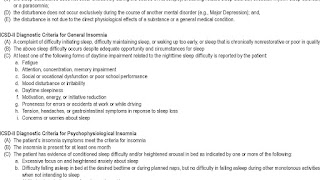
Depressive Disorder Not Otherwise Specified (DD-NOS) is designated by the code 311 in the DSM-IV for depressive disorders that are impairing but do not fit any of the officially specified diagnoses. According to the DSM-IV, DD-NOS encompasses "any depressive disorder that does not meet the criteria for a specific disorder." In the DSM-5, it is called unspecified depressive disorder.
Examples of disorders in this category include those sometimes described as minor depressive disorder and recurrent brief depression.
'Depression' refers to a spectrum of disturbances in mood that vary from mild to severe and from short periods to constant illness. A Depressive Disorder Not Otherwise Specified is diagnosed if a patients symptoms fail to meet the criteria more common depressive disorders such as Major Depressive Disorder or Dysthymia. Although Depressive Disorder NOS shares similar symptoms to Dysthymia, Dysthymia is classified by a period of at least 2 years of constantly recurring depressed mood, where as Depressive Disorder NOS is classified by much shorter periods of depressed moods.
For most people who suffer the condition, their life will be significantly affected. Depressive Disorder NOS can make many aspects of a person's daily life difficult to manage, inhibiting their ability to enjoy the things that used to make them happy. Sufferers of the disorder tend to isolate themselves from their friends and families; they tend to lose interest in some activities, experience behavioural changes and sleeping disorders. Some sufferers also experience suicidal tendencies or suicide attempts. In addition to having these symptoms, a diagnosis of Depressive Disorder NOS will only be made if the symptoms cause significant distress or impairment in social, occupational, or other important areas of functioning. For the diagnosis to be accurate, a psychiatrist is required to spend extensive time with the patient.
Symptoms of the disorder may arise due to several reasons. These include:
- Distress due to medical conditions
- Environmental effects and situations
However the effects of drugs or medication or bereavement are not classified under the diagnosis.
A person will not be diagnosed with the condition if they have or have had any of the following: a major depressive episode, manic episode, mixed episode or hypomanic episode.
A diagnosis of the disorder will look like this: "Depressive Disorder NOS 311"

Maps, Directions, and Place Reviews
Concerns
Accurately assessing for a specific Depressive Disorder diagnosis requires an expenditure of time that is deemed unreasonable for most primary care physicians. For this reason, physicians often use this code as a proxy for a more thorough diagnosis. There is concern that this may lead to a "wastebasket" mindset for certain disorders. In addition reimbursement through Medicare may be lower for certain non specific diagnosis.
Diagnosis Of Depression Dsm Video
DSM IV-TR classification
311- Depressive Disorder Not Otherwise Specified (NOS)
The Depressive disorder NOS category includes disorders with depressive features that do not meet the criteria for Major Depressive Disorder, Dysthymic disorder, Adjustment Disorder with Depressed Mood or Adjustment Disorder with Mixed Anxiety and Depressed Mood. Sometimes depressive symptoms can present as part of an Anxiety Disorder Not otherwise Specified. Examples of Depressive Disorder Not Otherwise Specified include.
- Premenstrual Dysphoric Disorder: in most menstrual cycles during the past years, (e.g., markedly depressed mood, marked anxiety, marked affective lability, or decreased interest in activities) regularly occurred during the onset of menses. These symptoms must be severe enough to markedly interfere with work, school, or usual activities and be entirely absent for at least 1 week post menses.
- Minor depressive disorder: episodes of at least 2 weeks of depressive symptoms but with fewer than the five items required for Major Depressive Disorder.
- Recurrent brief depressive disorder: depressive episodes lasting from 2 days up to 2 weeks, occurring at least once a month for 12 months (not associated with the menstrual cycle)
- Post psychotic depressive Disorder of schizophrenia: a Major Depressive Episode that occurs during the residual phase of schizophrenia.
- A Major Depressive Episode superimposed on delusional disorder, Psychotic Disorder Not Otherwise Specified, or the active phase of schizophrenia.
- Situations in which the clinician has concluded that a depressive disorder is present but is unable to determine whether it is primary, due to a general medical condition, or substance induced.
Symptoms of the disorder may arise due to several reasons. These include:
- Distress due to medical conditions
- Environmental effects and situations

Treatment
It is possible for this disorder to progress over time. A patient suffering from the disorder can improve the condition with treatments. There are several types of therapies that may improve the condition, but depending on a patient's experience of the disorder or the cause of the disorder, treatments will vary.
- Psychotherapy including behaviour therapy, Gestalt therapy, Adlerian therapy, psychoanalytic therapy and existential therapy.
- Pharmacotherapy through medications including antidepressants.
Source of the article : Wikipedia


EmoticonEmoticon